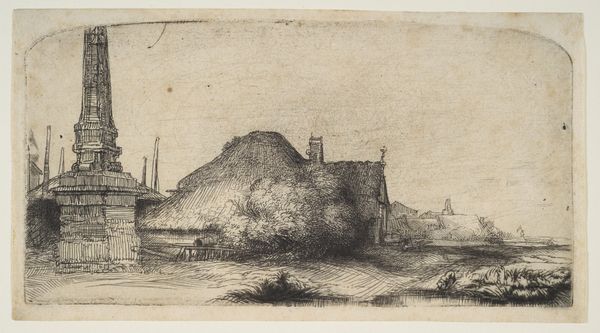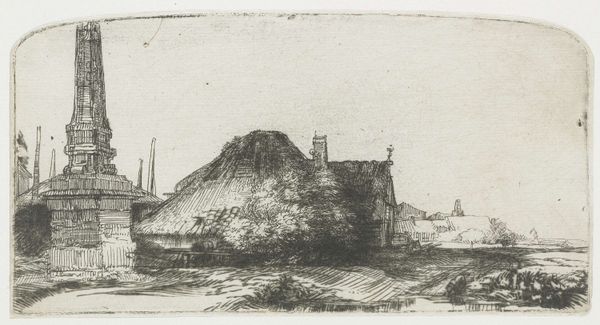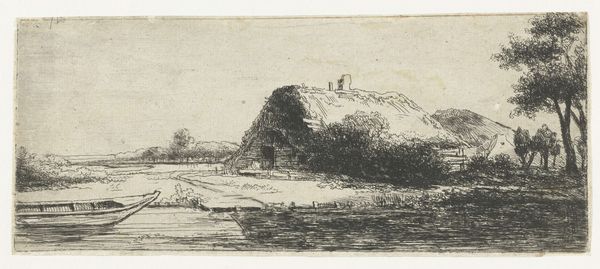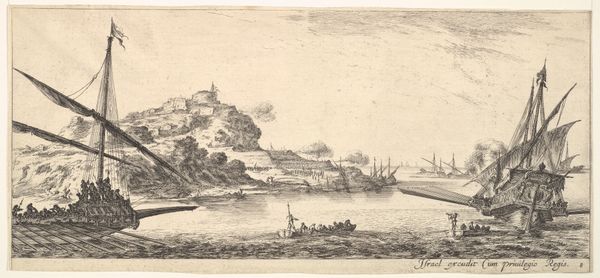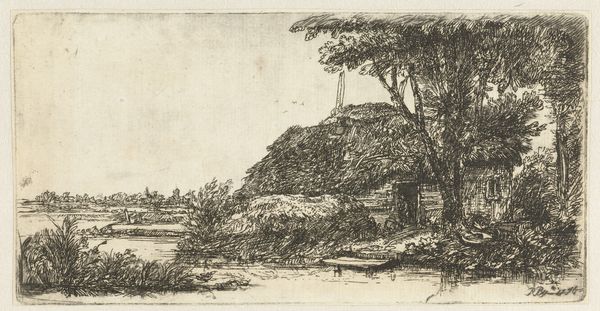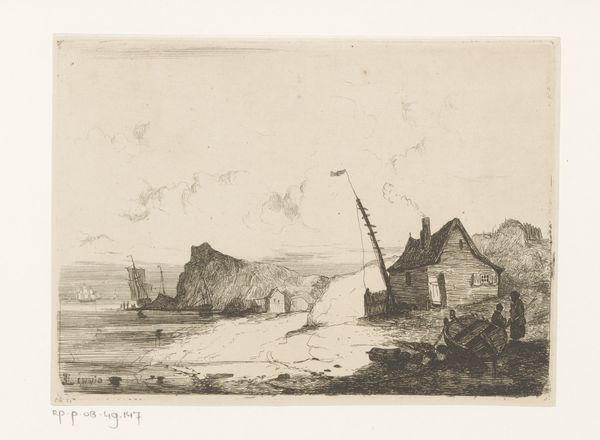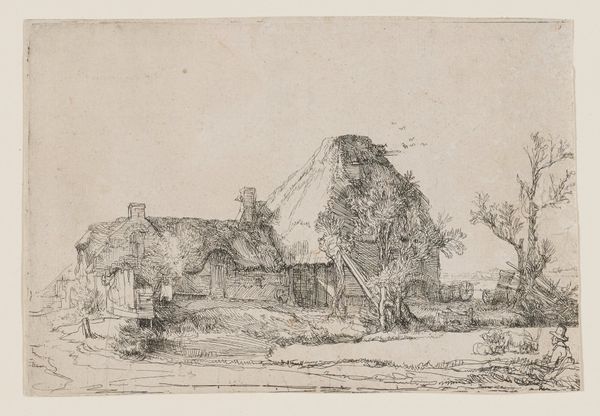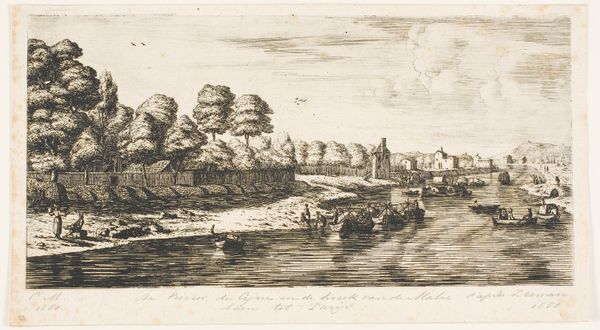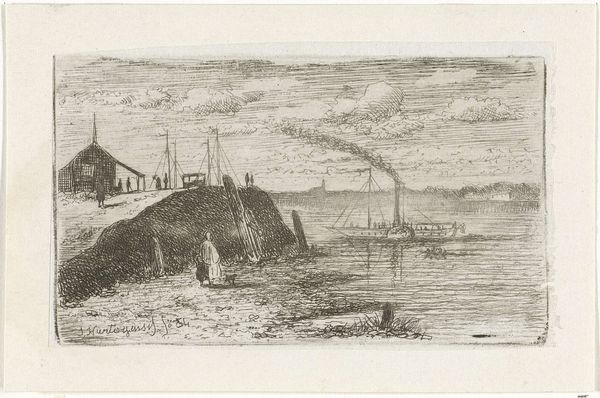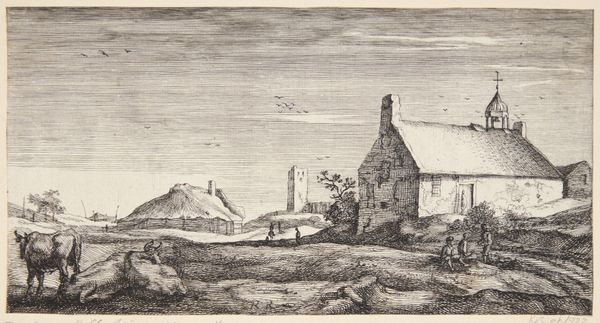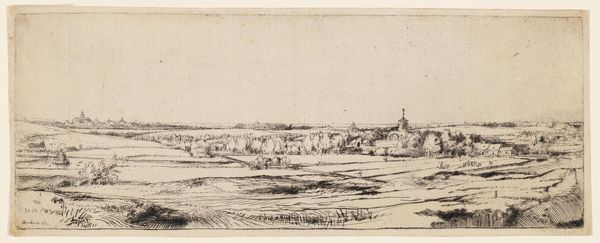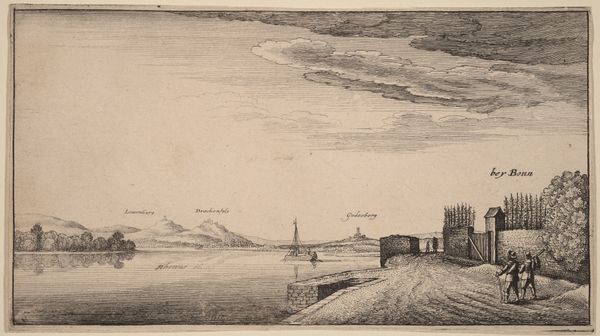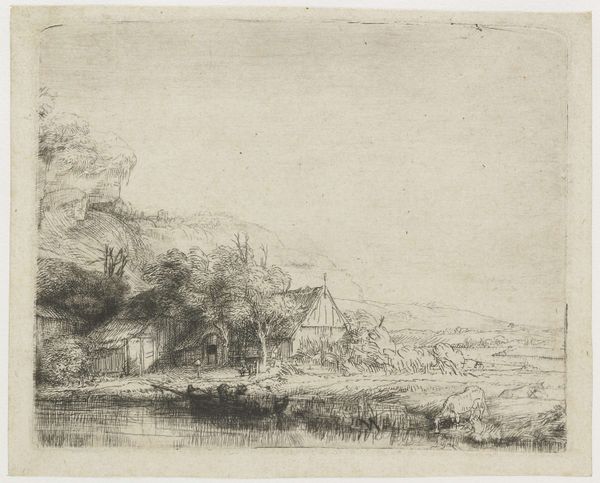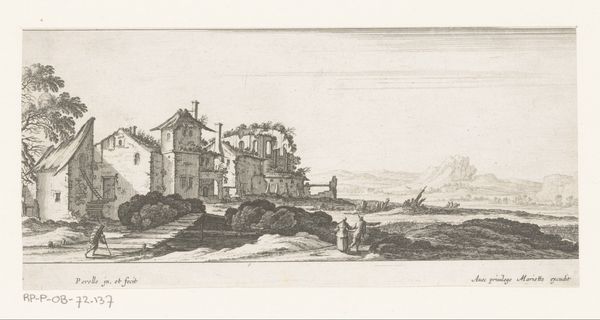
print, etching, drypoint
#
baroque
#
dutch-golden-age
# print
#
etching
#
landscape
#
form
#
line
#
drypoint
Dimensions: 3 1/4 x 6 5/16 in. (8.3 x 16 cm) (plate)
Copyright: Public Domain
Rembrandt van Rijn created this etching titled Landscape with an Obelisk. Notice how the composition balances the weighty obelisk on the left with the sprawling, lower cottage and distant buildings on the right. The obelisk is meticulously rendered, its verticality contrasting sharply with the horizontal lines of the land. The texture achieved through etching creates a sense of depth and atmosphere, drawing our eye to the horizon. Semiotically, obelisks often represent power and permanence, yet here, its rural setting challenges such grand associations. Rembrandt was exploring the interplay between the monumental and the mundane. The landscape elements, rendered with a network of fine lines, suggest a subtle destabilization of established meanings. It invites us to ponder the relationship between symbols of authority and the simplicity of rural life. It is through this tension that the work invites ongoing interpretation and re-interpretation.
Comments
minneapolisinstituteofart almost 2 years ago
⋮
In 1624 the city of Amsterdam erected the obelisk pictured here to mark its expanded boundary along the Spaardammerdijk River toward the town of Haarlem. Rembrandt romanticized the view of the relatively barren landscape, adding features and making the obelisk appear considerably larger than it actually was. Look closely to see that he initially drew it with an orb on top, just reaching the top of the image. Giving the etching needle greater dimension, he more firmly anchored the entire image. To the right is a farmhouse. The big peaked, thatched roof covers the animal barn, and the gabled section is the farmer's residence. The two structures were contiguous in order to preserve precious warmth during the cold, damp Dutch winters. Rembrandt shows it is time to prepare for another winter, for the roof of the hayrick-just behind the marker-is lowered, indicating the hay has been used up. A tiny figure in the distance carries a scythe for cutting hay to refill the rick.
Join the conversation
Join millions of artists and users on Artera today and experience the ultimate creative platform.
